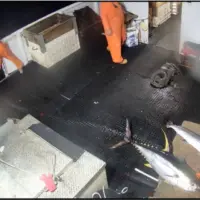
The Western Pacific Regional Fishery Management Council took final action Wednesday to authorize the use of electronic monitoring (EM) as a mandatory tool for data collection aboard longline vessels operating under Hawai‘i and American Samoa limited-entry permits.
The Council’s decision amends the Pelagic Fishery Ecosystem Plan to implement EM systems for the purpose of at-sea monitoring, including protected species interactions and other data collection requirements. The Council’s action calls for phased implementation of EM from 2025 through 2027, with vessels required to maintain EM systems once installed. The Council recommended longline vessels be randomly selected to install EM systems during the phase-in period.
The Council’s action calls for phased implementation of EM from 2025 through 2027, with vessels required to maintain EM systems once installed. The Council recommended longline vessels be randomly selected to install EM systems during the phase-in period.
The action comes as the number of human observers continues to decline due to National Marine Fisheries Service (NMFS) budget limitations. NMFS has secured funding to install EM systems and cover administrative and sampling costs through 2027, but the agency has not committed to maintaining the program beyond that point.
“Whether it be the human observer program or EM, this is a mandate by the federal government, and we are now discussing an unfunded mandate,” said Council Vice Chair for American Samoa Archie Soliai. “We’ve heard over the last couple of years how the American Samoa longline fleet is struggling, and I find it very hard to support having industry pay for something that should be the responsibility of the federal government beyond 2027.”
Public comments reinforced the need for federal support. Nate Ilaoa, vice chair of the American Samoa Advisory Panel, said, “This is a disproportionate burden to our region.” He also referenced U.S. agreements dating back to the early 1900s that committed the federal government to protect American Samoa’s resources.”




